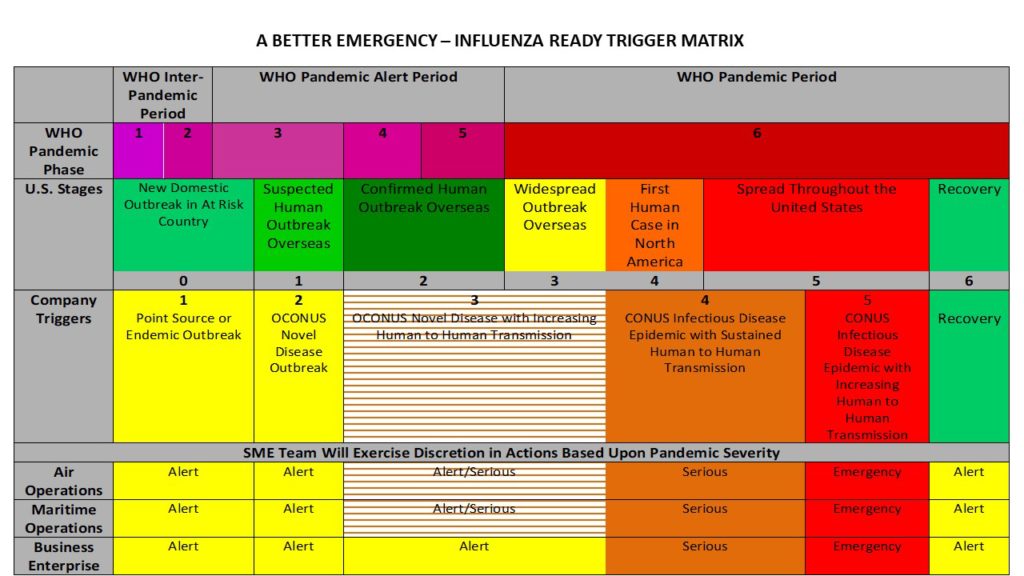After two years of dealing with a pandemic, you’d think organizations should have their act together. One of the best ways to assess your past performance, identify things you did well and find areas for improvement is through using the After Action Report/Plan of Improvement process (AAR/IP)
If you’re under the impression that the twists and turns we’ve seen with the COVID-19 pandemic have been completely unpredictable read the post below. I posted this back in 2018, after many years of working to educate and help organizations better prepare for the inevitable pandemics. You’ll notice there are triggers and action that organizations could/should take in order to mitigate impact to their personnel and operations. If you think you’ve done well with COVID-19 or wish things could have gone better, conducting an AAR/IP which looks at key components will help you understand how to do better the next time.
POSTED 2018
It’s the time of year when seasonal influenza and a bunch of other respiratory diseases move through your community and people you have contact with. How well you, your family, friends and organization do will depend on the effort you’ve expended getting ready. 
For example, has your risk management or resiliency team had a discussion on the overall goal of your organization’s or community’s seasonal and pandemic influenza mitigation plan? Is it comprehensive enough to including the role of pharmaceutical and non-pharmaceutical interventions? If you haven’t I’m guessing you’re waiting for the World Health Organization (WHO) or Centers for Disease Control and prevention (CDC) to hold your hand. Good luck with that. Need a hint, how about “Promote a healthy and productive work environment for employees/volunteers and operations by mitigating to the extent possible the impact of seasonal and/or pandemic influenza.”
Have you stopped to consider the benefits to your organization of reducing seasonal influenza infections annually as an exercise in pandemic preparedness? If not it tells me:
- You’re really not interested in the health of your employees or their families
- You’re not interested in the operational efficiency of your business
- You’re willing to increase healthcare costs and decrease revenue
So what are some of the tangible benefits of being Influenza Ready?
- Increase public awareness and understanding of the influenza hazard
- Improve community pre-planning for influenza pandemics and all-hazards
- Creates minimum standard guidelines for organizations and community entities to follow for adequate influenza readiness
- Encourage consistency in educational materials and response among communities and even states
- Recognize people, entities and communities that have adopted Influenza Ready guidelines
- Less disruption to health, social activities and the economy
For healthcare organizations the collateral benefits of seasonal influenza strategy and vaccination campaign are many:
- Decrease background disease
- Potential cross protection H or N
- Higher revenue -Decrease loss work time
- Decrease health care costs
- Herd Immunity
- Minimize potential for reassortment
- Protect vulnerable population
- Decrease liability
- Differential diagnosis
- Antiviral triage
- Reputation
Is any of this obtainable? Yes it is. The chart below looks at the relationship between actions you should initiate internally and local, state and federal recommendations. At each emergency action trigger point there is a set of corresponding actions. The key is you need to have your own surveillance activities that serve as a determinant for implementation, adjustment and curtailment of various interventions in your operation.
If you’re interested in learning more about an After Action Report/Plan of Improvement for your organization contact me at abetteremergency@gmail.com




Leave A Comment